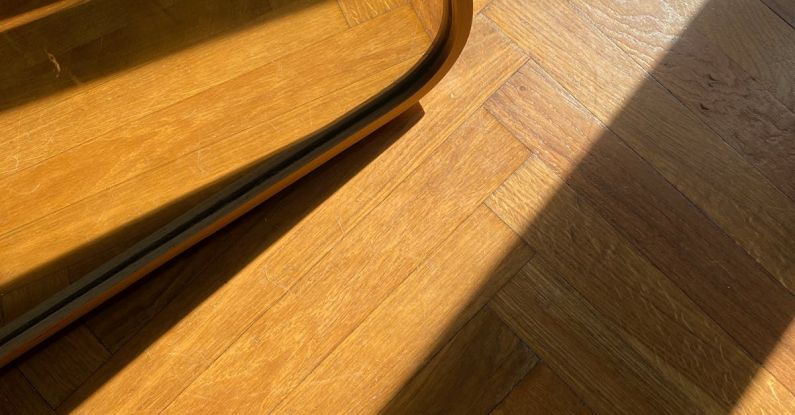Composite Flooring Options for Residential and Commercial Buildings
Composite flooring has become increasingly popular in both residential and commercial buildings due to its durability, sustainability, and aesthetic appeal. Made from a combination of wood fibers, plastic, and other materials, composite flooring offers a versatile and cost-effective alternative to traditional hardwood or tile floors. In this article, we will explore the various composite flooring options available for both residential and commercial spaces.
Benefits of Composite Flooring
Before delving into the different types of composite flooring, it is important to understand the benefits that make it a desirable choice for many homeowners and business owners. Composite flooring is highly durable and resistant to scratches, dents, and stains, making it ideal for high-traffic areas. Additionally, composite flooring is easy to maintain and requires minimal upkeep compared to natural wood or stone floors.
Composite flooring is also environmentally friendly, as it is often made from recycled materials and is recyclable at the end of its lifespan. This sustainability factor has made composite flooring a popular choice among eco-conscious consumers looking to reduce their carbon footprint.
Types of Composite Flooring
1. Luxury Vinyl Plank (LVP)
Luxury vinyl plank, or LVP, is a popular choice for both residential and commercial spaces due to its affordability and versatility. LVP mimics the look of natural hardwood floors while offering added durability and water resistance. With a wide range of colors and textures available, LVP can complement any design aesthetic, making it a versatile option for various settings.
2. WPC (Wood Plastic Composite) Flooring
WPC flooring is a unique type of composite flooring that combines the natural look of wood with the durability of plastic. This innovative flooring option is waterproof and highly resistant to moisture, making it an ideal choice for kitchens, bathrooms, and other high-moisture areas. WPC flooring is available in a variety of styles, including different wood grain patterns, colors, and plank sizes.
3. SPC (Stone Plastic Composite) Flooring
SPC flooring is another popular composite flooring option that combines the durability of stone with the comfort of vinyl. SPC flooring is known for its high level of stability and resistance to impacts, making it a suitable choice for commercial spaces with heavy foot traffic. This type of composite flooring is also waterproof and easy to install, making it a practical choice for both residential and commercial applications.
4. Cork Composite Flooring
Cork composite flooring is a sustainable option that offers a unique look and feel compared to traditional flooring materials. Cork is naturally resistant to mold, mildew, and allergens, making it a healthy choice for indoor environments. Cork composite flooring is also soft underfoot, providing added comfort and insulation, making it an excellent choice for bedrooms, living rooms, and other areas where comfort is a priority.
Choosing the Right Composite Flooring for Your Space
When selecting composite flooring for your residential or commercial space, it is essential to consider factors such as durability, maintenance requirements, and design preferences. Luxury vinyl plank flooring is an excellent choice for those seeking a cost-effective and versatile option, while WPC and SPC flooring offer enhanced durability and water resistance.
For eco-conscious consumers looking for a sustainable flooring option, cork composite flooring provides a unique and environmentally friendly choice. Ultimately, the right composite flooring option for your space will depend on your specific needs and preferences, so be sure to explore the various types available to find the perfect fit for your home or business.
In conclusion,
Composite flooring offers a wide range of options for residential and commercial buildings, providing durability, sustainability, and aesthetic appeal. From luxury vinyl plank and WPC flooring to SPC flooring and cork composite flooring, there is a composite flooring option to suit every style and budget. By understanding the benefits of each type of composite flooring and considering your specific needs, you can choose the perfect flooring option for your space.






